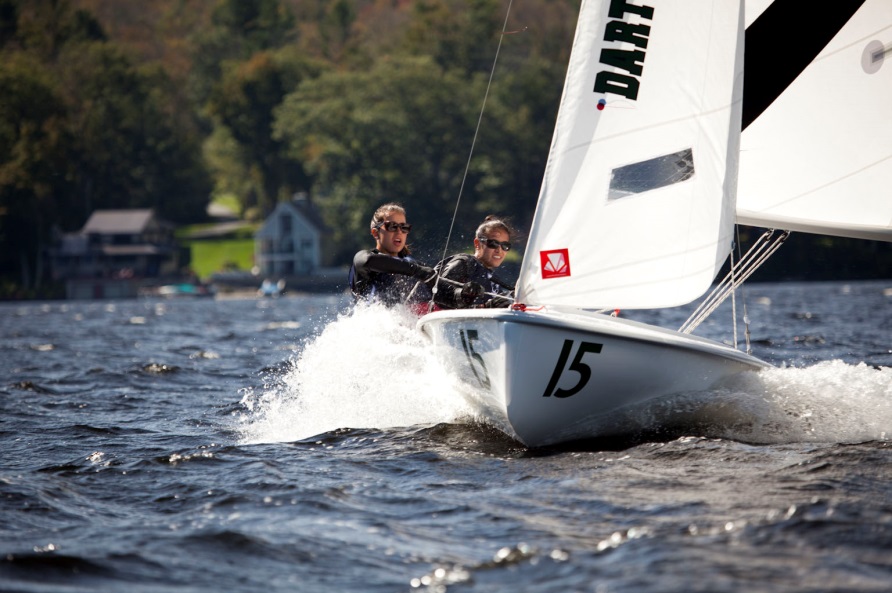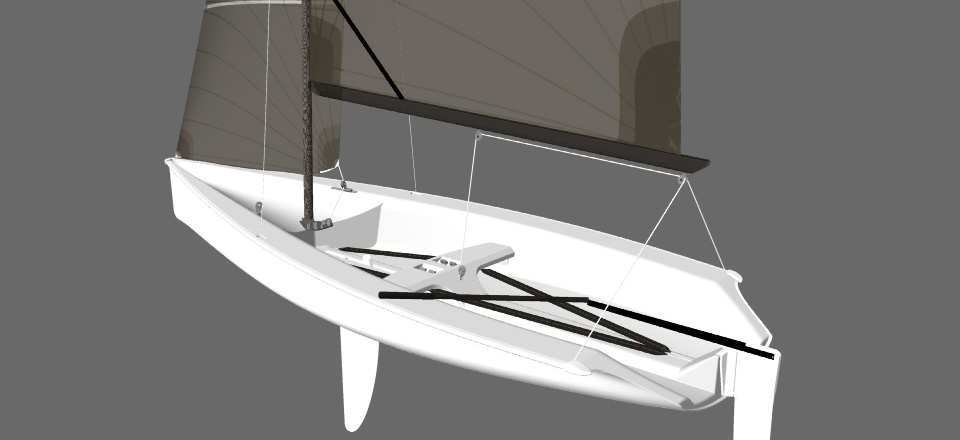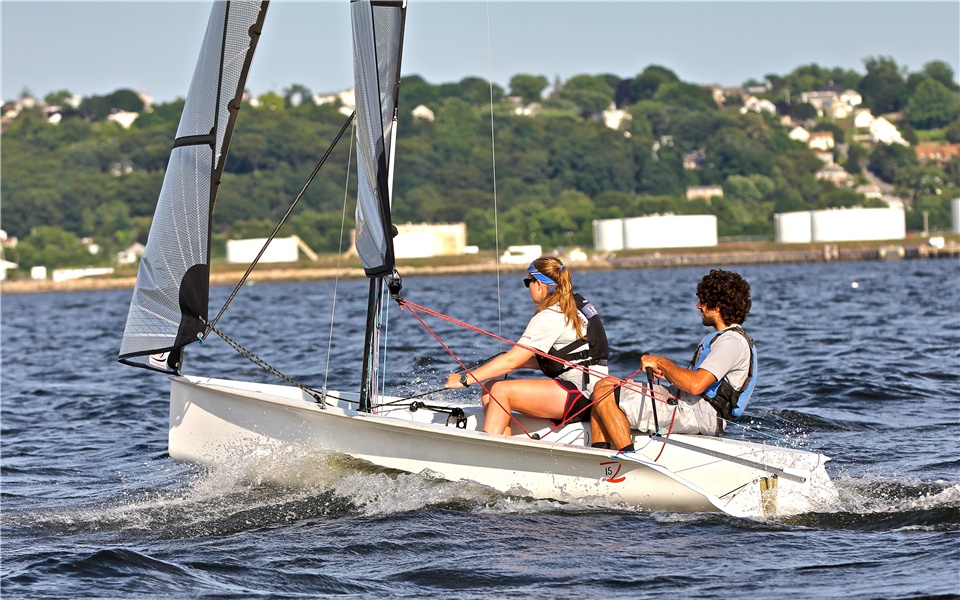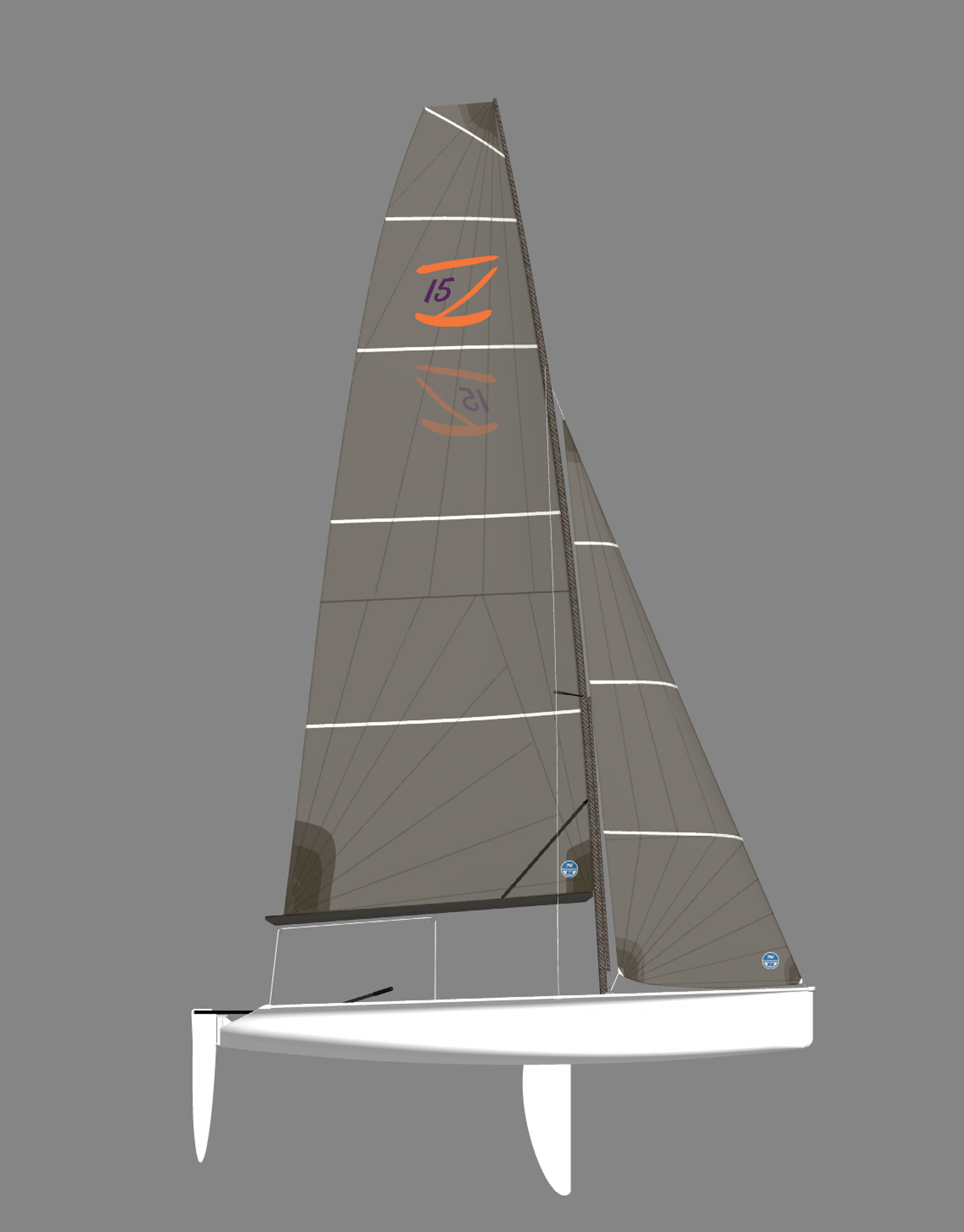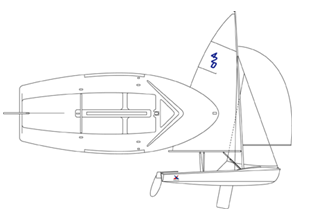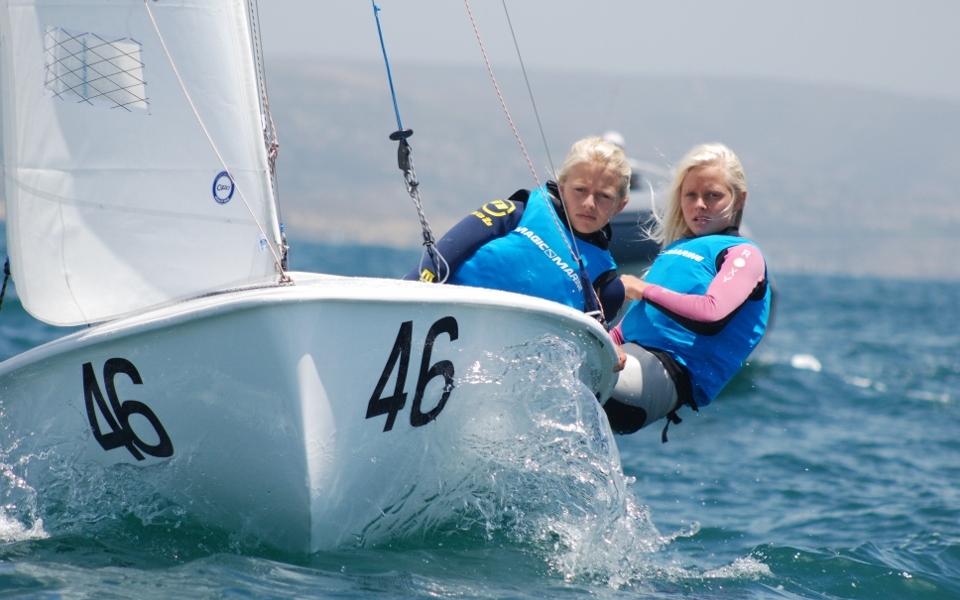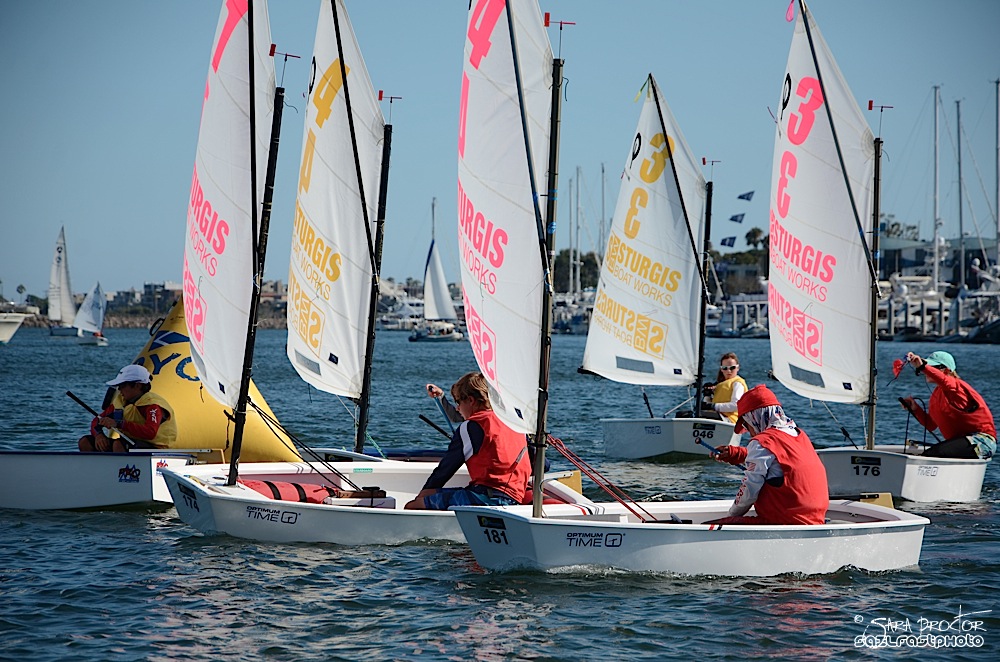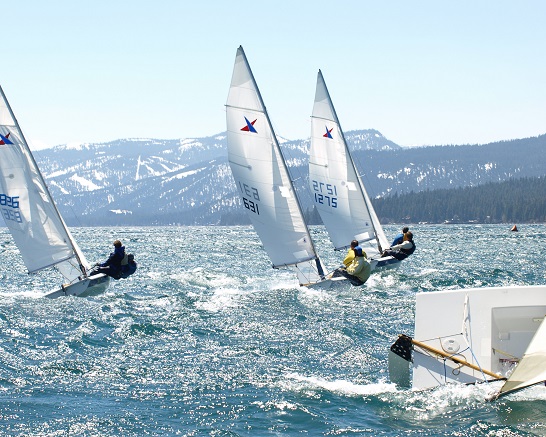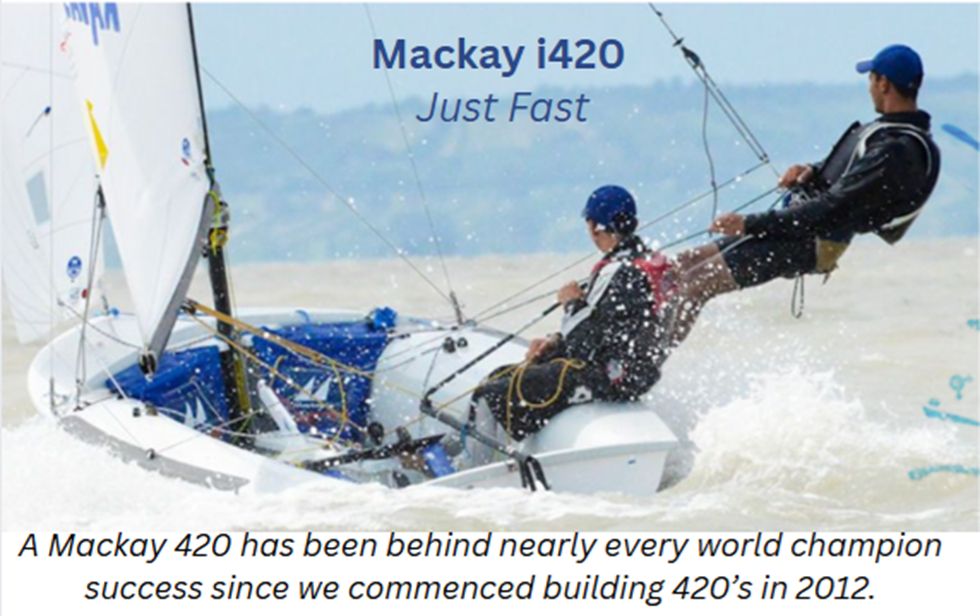
By Airwaves Writer Sarah Lihan
Most junior racing here in the US sticks to the tried and true youth classes—Lasers and Radials, Club 420’s, maybe a handful of catamarans and windsurfers—but very few make it into competitive keelboat racing until after college. Not so for Liam McCarthy and his crew on the Youth J/24 Team, who were selected by the US J/24 Class Association to represent the US as the country’s sole under-25 team at the Worlds this September in Newport, RI. McCarthy then took it one step further, as all but one on his roster are under-18.
This group has taken on a huge project, one that most adults struggle to put together. After winning the slot in March this year, McCarthy (who applied as an individual) and coach Todd Fedyszyn spent many nights selecting a team that would put the right people in the right roles while maximizing crew weight—no easy feat with smaller adolescent frames. Aiming to keep the program local, they wound up with a group of teenagers associated with the St. Petersburg YC who are keen to expand their horizons into a different brand of sailing.
One parent donated a beat-up, bright orange hull, and the kids took it from there, sanding and stripping it down above and below the waterline. Bow girl Emily Wright says of the boatwork, “Earlier this summer, we had the giant task of ‘de-orangifying’ the boat formerly known as Hot Wheels. The whole team and team parents put lots of hours in taking off and putting on hardware, sanding multiple layers of paint, and cleaning the boat from the inside out.”
Team prepping “Hot Wheels”— it takes a village.
They assembled a training plan that included the St. Pete NOOD, the J/24 Florida State Championships, and simple weekly Thursday and Friday night racing. Fedyszyn says, “The team has been really lucky to come from such a stronghold of J/24 racing in the US, and in the beginning, the top guys in the area were super helpful giving the kids specific tips and tricks.” But after winning a local Tampa Bay regatta in May, the locals are seeing the value of a boat full of dinghy whiz kids, and now include them in two boat testing just as they would any adult crew.
Winning the Sears/Bemis/Smythe Qualifiers. Left to Right: Hannah Steadman, YJ/24 bow Emily Wright, YJ/24 Trimmer Josh Dochoda, YJ/24 Helm Liam McCarthy, and Greiner Hobbs
They want to make it known they’re not just a bunch of kids out sailing around for the sake of it. Their goal is top 25 at the Worlds, and they believe that with the right conditions and a little luck, they could crack into the top 15. Beyond that, though, the crew want to spread their open-minded vision. Tactician Claire Dennis says, “The program has sparked big local interest, getting lots of Tampa Bay juniors out on different boats, filling in when a team member is off travelling for their other sailing. It gets them out of the well-worn youth sailing ruts and discovering new things to love about the sport.” And of course, as should be the goal in every campaign, trimmer Josh Dochoda reminds us all of the most important objective: “We aren’t pros, so keeping the crew in high spirits is of utmost importance. We’re a bunch of teenagers, and we want to have a great time.”
Racing at Florida State Championships, Miami, FL
St. Petersburg YC has played a huge supporting role in getting Youth J/24 Team USA out on the water and on the road to success, and the team couldn’t have gotten this far without the village that makes sailing the wonderful sport that we all enjoy. Helly Hansen has signed on as a gear supporter, and Sturgis Boat Works has generously donated a coachboat for the week of the worlds. The team is still looking for support to secure a new set of racing sails, and would graciously accept a tax-deductible donation made to the St. Petersburg Amateur Racing 501c3 via the team’s website. For updates on the final lead up to the worlds, make sure to follow their Facebook page.













